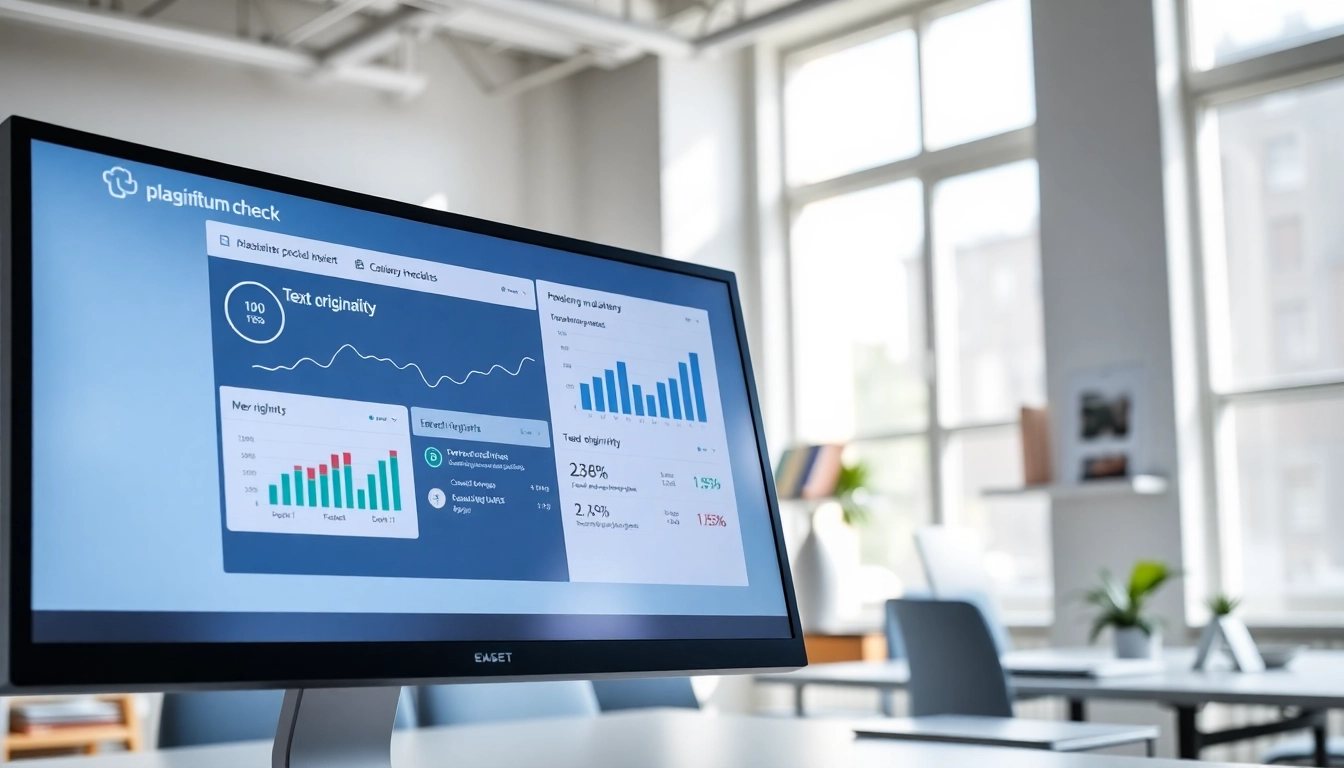Understanding Plagiarism and Its Consequences
Definition and Types of Plagiarism
Plagiarism is the act of using someone else’s work, ideas, or intellectual property without proper acknowledgment, presenting it as your own. This unethical practice can occur in various forms, including:
- Direct Plagiarism: Copying text word-for-word from a source without citation.
- Self-Plagiarism: Reusing one’s own previously published work without acknowledgment in a new context.
- Patchwork Plagiarism: Mixing multiple sources without proper citation, causing a “mosaic” effect.
- Accidental Plagiarism: Unintentional failure to cite sources appropriately, often due to ignorance of citation rules.
The Impact of Plagiarism on Academics and Professionalism
Plagiarism can have serious ramifications. In academic settings, it can lead to disciplinary actions such as expulsion or failing grades. For professionals, plagiarism can harm reputations, result in loss of credibility, and even lead to job termination. Furthermore, organizations that tolerate plagiarism risk legal liabilities and damage to their brand image.
Legal Implications of Plagiarism
Plagiarism is not merely an ethical issue; it can also have legal consequences. Content creators may face copyright infringement claims if they use copyrighted material without permission. Such situations can lead to costly lawsuits, financial penalties, and permanent damage to a person’s or organization’s reputation. Understanding the legal landscape surrounding plagiarism is crucial for both individuals and institutions.
Overview of Plagiarism Checkers
How Plagiarism Checkers Work
Plagiarism checkers utilize algorithms and databases to scan texts for similarities with existing sources. They typically operate by:
- Text Comparison: The software compares submitted text against a vast database of resources, including web pages, academic articles, and publications.
- Similarity Detection: If identical or similar phrases are found, the software highlights these sections and often provides links to the original source.
- Reporting: Most tools generate a detailed report indicating the percentage of similarity, providing a clear view of potential plagiarism instances.
Types of Plagiarism Checkers Available
There are various plagiarism checker options on the market, including:
- Free Online Tools: Basic checkers that offer limited scans suitable for casual users or students.
- Paid Services: Comprehensive tools with advanced features, such as in-depth reports and citation suggestions.
- Institutional Checkers: Platforms used by educational institutions, often integrated into learning management systems to help maintain academic integrity.
Choosing the Right Plagiarism Checker for Your Needs
Selecting the ideal plagiarism checker depends on various factors:
- Purpose: Determine whether the tool is needed for academic, professional, or personal use.
- Features: Look for features that suit your needs, such as detailed reporting, citation assistance, and integration capabilities.
- Cost: Evaluate your budget; while there are effective free tools, premium services often provide enhanced functionalities.
Benefits of Using a Plagiarism Checker
Maintaining Academic Integrity
Using a plagiarism checker reinforces the importance of academic integrity among students and professionals. It helps ensure that original ideas are respected and properly cited, laying a foundation for ethical scholarship and research.
Enhancing Your Writing Skills
Beyond detecting plagiarism, these tools can be educational. They often provide insights into writing habits, helping users identify overly quoted sections or repeated phrases, thus encouraging improved writing techniques over time.
Boosting SEO and Content Quality
In the digital landscape, originality is key to search engine ranking. Utilizing a reliable plagiarism checker can enhance content quality by ensuring that text is unique and thus more likely to perform well in search engine results. Original content not only attracts more traffic but also builds trust with the audience.
Best Practices for Utilizing a Plagiarism Checker
Understanding the Results Generated
Once a plagiarism check is completed, it’s vital to interpret the results carefully. Not all highlighted sections indicate plagiarism; some may require context or additional citation but may not be plagiarized. Analyzing each instance helps users make informed decisions about necessary edits.
Steps to Take After Identifying Plagiarism
Upon discovering instances of plagiarism, users should:
- Revise: Adjust the text by rewriting sections or adding proper citations.
- Educate: Seek to understand the reasons behind the plagiarism, whether intentional or accidental.
- Consult Resources: Utilize writing guides and citation resources to ensure proper referencing in the future.
Integrating Plagiarism Checkers into Your Workflow
To make the most of a plagiarism checker, it’s beneficial to incorporate it into the writing process. For writers, this might mean running checks at various stages to maintain originality. Educators might encourage students to check papers before submission, fostering an environment of integrity and respect for intellectual property.
Future Trends in Plagiarism Detection Technology
The Role of AI in Plagiarism Detection
Artificial Intelligence (AI) is rapidly transforming plagiarism detection. Future technologies may involve machine learning algorithms that continuously improve their ability to detect nuanced forms of plagiarism, such as paraphrasing or embedded quotes taken out of context.
Predictions for Evolving Plagiarism Checkers
Looking ahead, we can anticipate several developments:
- Increased Accuracy: Enhanced algorithms that reduce false positives and improve recognition of rephrased content.
- User-Friendly Interfaces: Simplified user experiences to assist non-technical users in navigating complex reports and suggestions.
- Expanded Database Access: Checkers will likely integrate new databases, enhancing coverage and detection rates.
Preparing for Ethical Writing in a Digital Age
As the digital landscape continues to evolve, maintaining ethical writing practices is essential. Individuals and organizations must prioritize understanding plagiarism and its implications, equipping themselves with tools and knowledge to navigate the realm of original content. Emphasizing education and awareness surrounding plagiarism will not only benefit writers but also honor the integrity of the creative process as a whole.
